#forsyte chronicles
Explore tagged Tumblr posts
Text

So my brother-in-law's birthday present to me is, apparently, a six-month subscription to Bookishly, which I was unaware of before because it's a UK-based company. Also because I don't really pay attention to the various subscription/box/crate services out there until a) they sponsor a YouTuber I watch (like tippsy, which sadly doesn't ship to my state because laws about alcohol shipping are labyrinthine); or b) someone I know buys me one (like Bokksu, which I greatly enjoyed for the three months I got it, a few years back.)
I'm receiving the "Tea and Vintage Book" package. He knows me so well!
It came with a bookmark as well, which is fab, because I'm always in need of more as they get lost or wear out.
The book came wrapped in quite lovely paper printed with a Virginia Woolf quote about secondhand books, very appropriate.
The book itself, Swan Song by John Galsworthy, I had never heard of, and appears to be the first Penguin paperback edition, published in 1967.
It's #6 in a nine-book saga. Fortunately for me, modern technology will supply the first five--they're all available digitally from my library, though I'll be getting a mix of audio- and ebooks to catch up to the paperback. Once my borrow limit rolls over tomorrow I can get started!
11 notes
·
View notes
Text
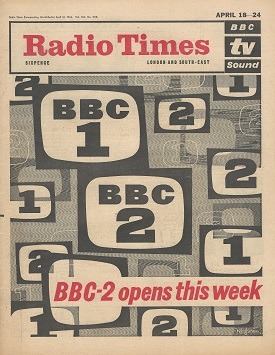

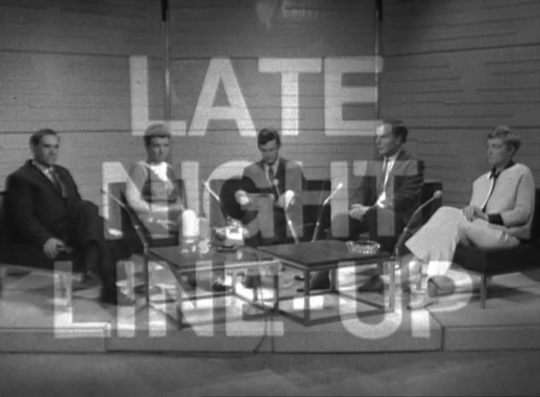
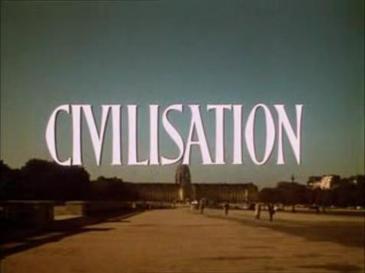

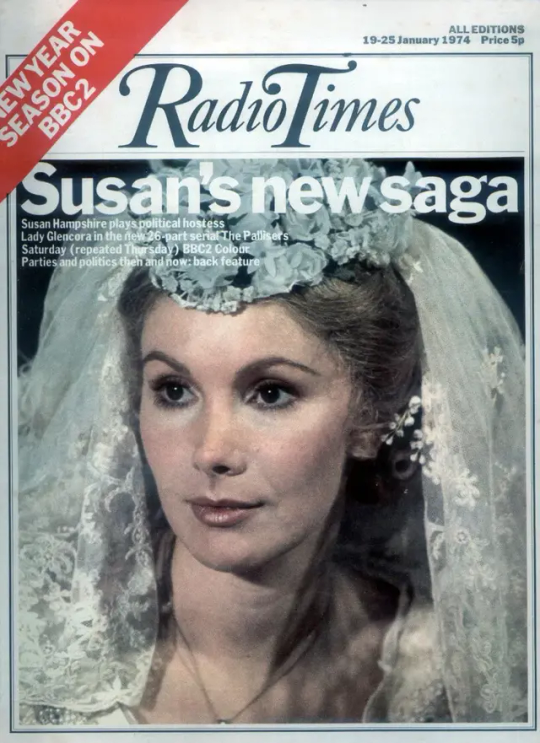


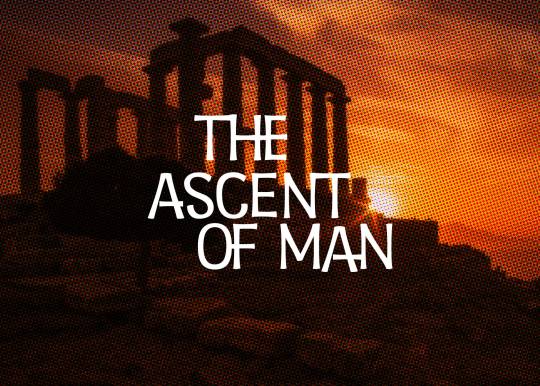
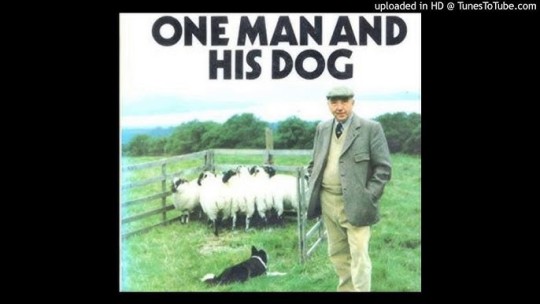
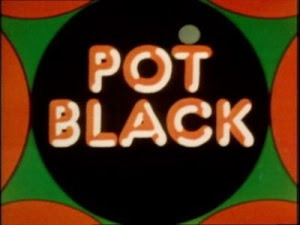
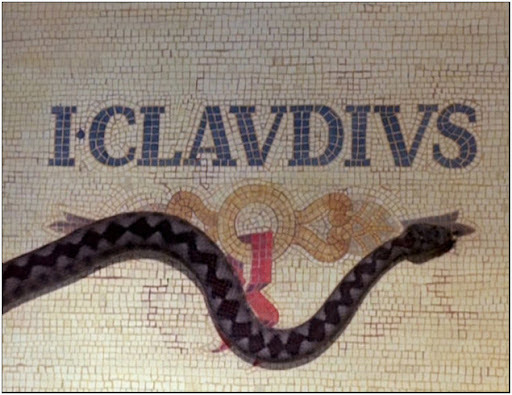



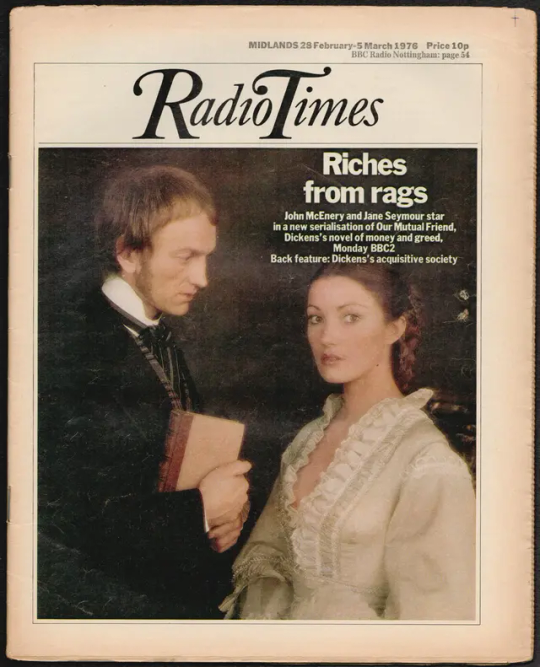




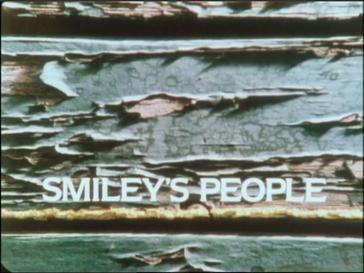

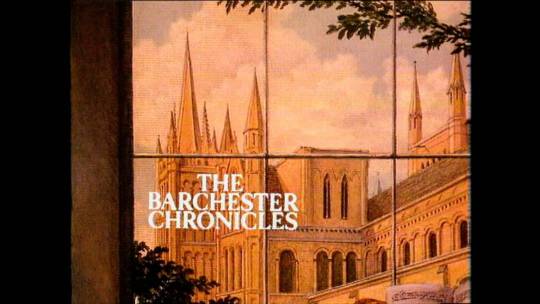
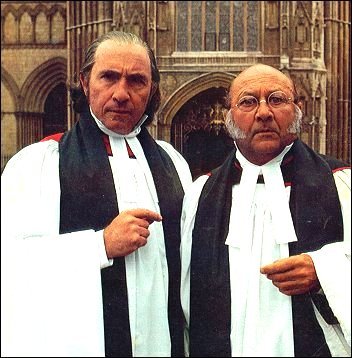




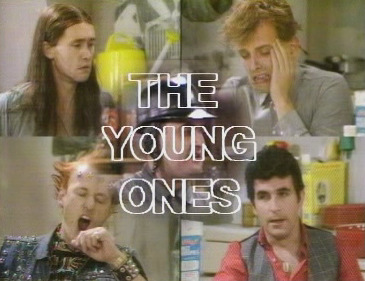

Happy 60th Birthday to BBC 2 or BBC TWO. Whichever.
#bbc 2#bbc two#late night line up#civilisation#kenneth clarke#the forsyte saga#john galsworthy#the pallisers#anthony trollope#the ascent of man#dr jacob bronowski#jacob bronowski#one man and his dog#pot black#ii#i claudius#robert graves#life on earth#david attenborough#our mutual friend#charles dickens#tinker tailor soldier spy#john le carre#alec guinness#not the nine o'clock news#the hitch hikers guide to the galaxy#douglas adams#smiley's people#the barchester chronicles#bleak house
6 notes
·
View notes
Text
My Fandoms
Fandoms I have written in:
55 Degrees North/The Night Detective Age Sensible Aliens 2 Almost Human Alphas American Dreams Angel Farm At the Faber Being Human Brokeback Mountain Bron/Broen Brothers In Arms/L’Union Sacrée Brottet/Forbrydelsen Buffy the Vampire Slayer/Angel
The Cape The Chronicle Cold Case Commander In Chief Conviction Crossing Jordan/Silent Witness Cutthroat Island Death in Paradise Defense Desperate Romantics Dharma & Greg Downton Abbey Dr Quinn The Eagle – A Crime Odyssey Extremely Dangerous
Father’s Day/La fête des pères First Wave Forsyte Saga The Fugitive Gattaca Gilda Greystoke: The Legend of Tarzan, Lord of the Apes Grimm Hair Haven Heartbeat Hercules/Xena Heroes High Tide Homicide – Life on the street Hornblower House M.D. House of Angels (Angel Farm) The House of Eliott Inspector Lynley Mysteries Jack & Jill Judging Amy KDD Kriminaldauerdienst Lewis The Long Kiss Goodnight The Lord of the Rings Love Boat: The Next Wave Miami Vice Midsomer Murders MillenniuM
My Beautiful Laundrette My Own Private Idaho The Chronicles of Narnia Poldark The Pretender Prey Rastignac ou les ambitieux The Raven Rex, a Cop’s Best Friend Robin of Sherwood Roswell Sanctuary The Scarlet Pimpernel Second Sight Sherlock Holmes Silent Witness/Crossing Jordan Sleepers Sliders Spellbound Spooks Spy Game Stargate SG1 Starsky & Hutch Star Trek State of Play Stephanie Plum Three Torchwood A Touch of Frost Touching Evil Trinity Unit One Velvet Goldmine
Vera Veronica Mars Waking the Dead Wallander Will & Grace Wire In the Blood Without a Trace X files Young Lions Your Mother Too
Some of my other fandoms
The Sarah Jane Adventures Lord of the Rings Murder Rooms Endeavour Space: 1999 All Creatures Great and Small 21 Jump Street (the old tv series
Grantchester Call the Midwife Bletchley Circle Mr Selfridge Sherlock Miss Fisher’s Murder Mysteries Dark Matter
All Jane Austen’s books, also as tv and movies Jane Eyre (so far the movie, looking forward to reading the book) Diana Wynne Jones’ books Garth Nix’s Sabriel books Charles De Lint (Dreams Underfoot, The Blue Girl)
Gregory Frost (Shadowbridge, Lord Tophet) Ursula LeGuin’s Earthsea series Jean-François Parot’s historic mysteries about Nicholas LeFloch Eliot Pattison’s mysteries, set in Tibet Barbara Nadels mysteries, set in Turkey
and many more, too many to mention here.
0 notes
Text





SUSAN HAMPSHIRE.
Filmography
1947 The Woman in the Hall
1959 Idol on parade
1959 Up and down
1959 Expresso Bongo
1960 During one night
1961 The Long Shadow
1961 Adventures in Paradise
1962 The Andromeda Breakthrough
1962 What Katy Did
1963 The Three Lives of Thomasina
1964 The night must fall
1964 Wonderful Life
1964 A Hard Day's Night
1966 Paris au mois d'août
1966 Time Tunnel
1966 The Fighting Prince of Donegal
1966 The Trygon Factor
1967 The Violent Enemy
1967 The Forsyte Saga
1967 Vanity Fair
1968 The Lady is a Liar
1969 An ideal husband
1969 Monte Carlo or Bust!
1969 The first Churchills
1969 David Copperfield
1971 Malpertuis
1972 living free
1972 A time to love
1972 Neither the sea nor the sand
1972 Baffled!
1973 Le Fils
1973 Dr. Jekyll and Mr. Hyde
1973 I Found No Roses for my Mother
1974 The Pallisers
1975 Thriller
1976 The David Story
1977 Outbreak!
1981 Dick Turpin
1982 The Barchester Chronicles
1984 Leaving
1992 don't tell father
1997 The Grand
1999 Nancherrow
2000 Monarch of the Glen
2001 Eve Buckingham
2003 Sparkling cyanide
2009 The Royal
2011 Casualty
2017 Midsomer Murders
2017 The son of another mother.
Créditos: Tomado de Wikipedia
https://en.wikipedia.org/wiki/Susan_Hampshire
1 note
·
View note
Text
The Silver Spoon
The Silver Spoon - by John Galsworthy, the second volume of The Modern Comedy trilogy
The Silver Spoon – John Galsworthy Galsworthy’s Forsyte Chronicles stretched to nine volumes and the Silver Spoon in some senses marks the midway point, being the fifth in the series and the second of the Modern Comedy trilogy. Published in 1926, it follows the story of Soames Forsyte and his daughter, Fleur, now married to Michael Mont and mother of a son, Kit, described as the eleventh…

View On WordPress
#Fleur Forsyte#Foggartism#Francis Wilmot#John Galsworthy#Marjorie Ferrar#Michael Mont#Soames Forsyte#The Forsyte Saga#The Silver Spoon
0 notes
Text
Best Books of the 20th Century (322 books)

Lord of the Rings [trilogy] by J. R. R. Tolkien
Little Prince by Antoine de Saint-Exupéry
Peter and the Wolf by Sergey Prokofiev
Call of the Wild by Jack London
Wizard of Oz by L. Frank Baum
Hound of the Baskervilles by Sir Arthur Conan Doyle
Wind in the Willows by Kenneth Grahame
Tale of Peter Rabbit by Beatrix Potter
Remembrance of Things Past by Marcel Proust
Ulysses by James Joyce
Peanuts by Charles M. Shultz
Old Man and the Sea by Ernest Hemingway
Lady Chatterley's Lover by D. H. Lawrence
White Fang by Jack London
Great Gatsby by F. Scott Fitzgerald
Secret Garden by Frances Hodgson Burnett
Hobbit by J. R. R. Tolkien
Grapes of Wrath by John Steinbeck
Peter Pan by J. M. Barrie
Anne of Green Gables by L. M. Montgomery
Winnie the Pooh by A. A. Milne
Nineteen Eighty-Four by George Orwell
Animal Farm by George Orwell
Gone with the Wind by Margaret Mitchell
Dubliners by James Joyce
Portrait of the Artist as a Young Man by James Joyce
For Whom the Bell Tolls by Ernest Hemingway
Farewell to Arms by Ernest Hemingway
Kim by Rudyard Kipling
Just So Stories by Rudyard Kipling
Trial by Franz Kafka
Sea Wolf by Jack London
All Quiet on the Western Front by Erich Maria Remarque
Of Mice and Men by John Steinbeck
One Hundred Years of Solitude by Gabriel García Márquez
Magic Mountain by Thomas Mann
Brave New World by Aldous Huxley
Stranger by Albert Camus
Sons and Lovers by D. H. Lawrence
Good Earth by Pearl S. Buck
Buddenbrooks by Thomas Mann
Plague by Albert Camus
Rebecca by Dame Daphne Du Maurier
Heart of Darkness by Joseph Conrad
Sun Also Rises by Ernest Hemingway
Pearl by John Steinbeck
Of Human Bondage by W. Somerset Maugham
Way of All Flesh by Samuel Butler
Doctor Zhivago by Boris Pasternak
Siddhartha by Hermann Hesse
Lolita by Vladimir Nabokov
Castle by Franz Kafka
Little Princess by Frances Hodgson Burnett
Fahrenheit 451 by Ray Bradbury
Sound and the Fury by William Faulkner
Velveteen Rabbit by Margery Williams Bianco
Nostromo by Joseph Conrad
Steppenwolf by Hermann Hesse
Ethan Frome by Edith Wharton
Virginian by Owen Wister
Forsyte Saga by John Galsworthy
Catcher in the Rye by J. D. Salinger
Moon and Sixpence by W. Somerset Maugham
My Ántonia by Willa Cather
Babbitt by Sinclair Lewis
Victory by Joseph Conrad
Lord of the Flies by William Golding
Garfield by Jim Davis
Phantom of the Opera by Gaston Leroux
Tender Is the Night by F. Scott Fitzgerald
Death in Venice by Thomas Mann
To Kill a Mockingbird by Harper Lee
Anne of Avonlea by L. M. Montgomery
Tale of Benjamin Bunny by Beatrix Potter
Lion, the Witch, and the Wardrobe by C. S. Lewis
Yearling by Marjorie Rawlings
Mrs. Dalloway by Virginia Woolf
Scarlet Pimpernel by Baroness Orczy
East of Eden by John Steinbeck
Bridge of San Luis Rey by Thornton Wilder
Women in Love by D. H. Lawrence
Jungle by Upton Sinclair
Harry Potter and the Philosopher's Stone by J. K. Rowling
Finnegans Wake by James Joyce
Charlotte's Web by E. B. White
House at Pooh Corner by A. A. Milne
Tortilla Flat by John Steinbeck
Passage to India by E. M. Forster
On the Road by Jack Kerouac
Age of Innocence by Edith Wharton
Power and the Glory by Graham Greene
House of Mirth by Edith Wharton
Main Street by Sinclair Lewis
And Then There Were None by Agatha Christie
To the Lighthouse by Virginia Woolf
Winesburg, Ohio by Sherwood Anderson
This Side of Paradise by F. Scott Fitzgerald
Sanctuary by William Faulkner
One Day in the Life of Ivan Denisovich by Aleksandr Solzhenitsyn
American Tragedy by Theodore Dreiser
Murder on the Orient Express by Agatha Christie
Anne of the Island by L. M. Montgomery
Harry Potter and the Chamber of Secrets by J. K. Rowling
Catch-22 by Joseph Heller
Thorn Birds by Colleen McCullough
Name of the Rose by Umberto Eco
Red Pony by John Steinbeck
Light in August by William Faulkner
Lost Horizon by James Hilton
Pippi Longstocking by Astrid Lindgren
Screwtape Letters by C. S. Lewis
Very Hungry Caterpillar by Eric Carle
Cannery Row by John Steinbeck
All the King's Men by Robert Penn Warren
Ambassadors by Henry James
Mary Poppins by P. L. Travers
O Pioneers by Willa Cather
Death Comes for the Archbishop by Willa Cather
Martian Chronicles by Ray Bradbury
Look Homeward Angel by Thomas Wolfe
Room With a View by E. M. Forster
Arrowsmith by Sinclair Lewis
Magician's Nephew by C. S. Lewis
Charlie and the Chocolate Factory by Roald Dahl
Where the Wild Things Are by Maurice Sendak
Razor's Edge by W. Somerset Maugham
Cry, the Beloved Country by Alan Paton
Howards End by E. M. Forster
Wrinkle in Time by Madeleine L'Engle
Make Way for Ducklings by Robert McCloskey
Harry Potter and the Prisoner of Azkaban by J. K. Rowling
Caps for Sale by Esphyr Slobodkina
Tuck Everlasting by Natalie Babbitt
Brideshead Revisited by Evelyn Waugh
One Flew Over the Cuckoo's Nest by Ken Kesey
Curious George by H. A. Rey
Spy Who Came in from the Cold by John Le Carré
Rebecca of Sunnybrook Farm by Kate Douglas Smith Wiggin
Good-bye Mr. Chips by James Hilton
Madeline by Ludwig Bemelmans
Little House on the Prairie by Laura Ingalls Wilder
Little House in the Big Woods by Laura Ingalls Wilder
Dune by Frank Herbert
Voyage of the Dawn Treader by C. S. Lewis
James and the Giant Peach by Roald Dahl
As I Lay Dying by William Faulkner
Tree Grows in Brooklyn by Betty Smith
Horse and his Boy by C. S. Lewis
Love in the Time of Cholera by Gabriel García Márquez
Story of Ferdinand by Munro Leaf
Cat in the Hat by Dr. Seuss
Heart Is a Lonely Hunter by Carson McCullers
Last Battle by C. S. Lewis
Slaughterhouse Five by Kurt Vonnegut
Wings of the Dove by Henry James
Little Engine that Could by Watty Piper
Jonathan Livingston Seagull by Richard Bach
Silmarillion by J. R. R. Tolkien
Firm by John Grisham
Silver Chair by C. S. Lewis
Things Fall Apart by Chinua Achebe
Roots by Alex Haley
Native Son by Richard Wright
Stuart Little by E. B. White
Julie of the Wolves by Jean Craighead George
Absalom, Absalom by William Faulkner
Harry Potter and the Goblet of Fire by J. K. Rowling
Goodnight Moon by Margaret Wise Brown
Bridges of Madison County by Robert James Waller
Snowy Day by Ezra Jack Keats
Sarah, Plain and Tall by Patricia MacLachlan
Last Tycoon by F. Scott Fitzgerald
Bluest Eye by Toni Morrison
From the Mixed Up Files of Mrs. Basil E. Frankweiler by E. L. Konigsburg
Call It Courage by Armstrong Sperry
Cricket in Times Square by George Selden
Riders of the Purple Sage by Zane Grey
Outsiders by S. E. Hinton
Time to Kill by John Grisham
Bridge to Terabithia by Katherine Paterson
Out of Africa by Isak Dinesen
Hunt for Red October by Tom Clancy
Rainmaker by John Grisham
Sula by Toni Morrison
Borrowers by Mary Norton
Where's Waldo by Martin Handford
Beloved by Toni Morrison
Giver by Lois Lowry
Fountainhead by Ayn Rand
Pelican Brief by John Grisham
Member of the Wedding by Carson McCullers
Matilda by Roald Dahl
Color Purple by Alice Walker
Caddie Woodlawn by Carol Ryrie Brink
Clockwork Orange by Anthony Burgess
King of the Wind by Marguerite Henry
Interview with the Vampire by Anne Rice
Separate Peace by John Knowles
Number the Stars by Lois Lowry
Ramona Quimby, Age 8 by Beverly Cleary
Phantom Tollbooth by Norton Juster
Hatchet by Gary Paulsen
Sounder by William Howard Armstrong
On the Banks of Plum Creek by Laura Ingalls Wilder
Roll of Thunder Hear My Cry by Mildred D. Taylor
Cheaper by the Dozen by Frank B. Gilbreth
Green Eggs and Ham by Dr. Seuss
Summer of the Swans by Betsy Cromer Byars
Mrs. Frisby and the Rats of Nimh by Robert C. O'Brien
Bell Jar by Sylvia Plath
Island of the Blue Dolphins by Scott O'Dell
Schindler's List by Thomas Keneally
Jurassic Park by Michael Crichton
Invisible Man by Ralph Ellison
Runaway Jury by John Grisham
Incredible Journey by Sheila Every Burnford
Sylvester and the Magic Pebble by William Steig
Accidental Tourist by Anne Tyler
Blueberries for Sal by Robert McCloskey
Dear Mr. Henshaw by Beverly Cleary
Witch of Blackbird Pond by Elizabeth George Speare
Handmaid's Tale by Margaret Atwood
Watership Down by Richard Adams
Misty of Chincoteague by Marguerite Henry
Song of Solomon by Toni Morrison
Harry Potter and the Order of the Phoenix by J. K. Rowling
Painted House by John Grisham
Old Yeller by Fred Gipson
Client by John Grisham
Celestine Prophecy by James Redfield
Light in the Forest by Conrad Richter
Why Mosquitoes Buzz in People's Ears by Verna Aardema
Great Gilly Hopkins by Katherine Paterson
Like Water for Chocolate by Laura Esquivel
Whipping Boy by Sid Fleischman
Danny and the Dinosaur by Syd Hoff
Tales of a Fourth Grade Nothing by Judy Blume
Go Tell It on the Mountain by James Baldwin
Tar Baby by Toni Morrison
Ramona and Her Father by Beverly Cleary
Are You There God? It's Me, Margaret by Judy Blume
Chamber by John Grisham
My Side of the Mountain by Jean Craighead George
Partner by John Grisham
Runaway Bunny by Margaret Wise Brown
Holes by Louis Sachar
Clear and Present Danger by Tom Clancy
Chocolate War by Robert Cormier
Breathing Lessons by Anne Tyler
Clan of the Cave Bear by Jean M. Auel
Indian in the Cupboard by Lynne Reid Banks
Trumpet of the Swan by E. B. White
Cider House Rules by John Irving
Amelia Bedelia by Peggy Parish
Harriet the Spy by Louise Fitzhugh
Flowers for Algernon by Daniel Keyes
Day No Pigs Would Die by Robert Peck
Shiloh by Phyllis Reynolds Naylor
Superfudge by Judy Blume
Jazz by Toni Morrison
Polar Express by Chris Van Allsburg
Farmer Boy by Laura Ingalls Wilder
Slave Dancer by Paula Fox
Ox-Bow Incident by Walter Van Tilburg Clark
Their Eyes Were Watching God by Zora Neale Hurston
Brethren by John Grisham
Testament by John Grisham
Henry Huggins by Beverly Cleary
Red Storm Rising by Tom Clancy
Street Lawyer by John Grisham
Left Behind by Tim F. Lahaye
Patriot Games by Tom Clancy
Snow Falling on Cedars by David Guterson
Timeline by Michael Crichton
Ramona the Pest by Beverly Cleary
Stranger in a Strange Land by Robert A. Heinlein
Mammoth Hunters by Jean M. Auel
Joy Luck Club by Amy Tan
Brown Bear, Brown Bear, What Do You See? by Bill Martin
Across Five Aprils by Irene Hunt
Killer Angels by Michael Shaara
Jacob Have I Loved by Katherine Paterson
Alexander and the Terrible, Horrible, No Good, Very Bad Day by Judith Viorst
Notebook by Nicholas Sparks
Prince Caspian the Return to Narnia by C. S. Lewis
Chosen by Chaim Potok
While My Pretty One Sleeps by Mary Higgins Clark
Autobiography of Miss Jane Pittman by Ernest J. Gaines
Cold Mountain by Charles Frazier
Horse Whisperer by Nicholas Evans
Plains of Passage by Jean M. Auel
Lonesome Dove by Larry McMurtry
Sum of All Fears by Tom Clancy
Lost World by Michael Crichton
Unnatural Exposure by Patricia Daniels Cornwell
Loves Music, Loves to Dance by Mary Higgins Clark
Maniac Magee by Jerry Spinelli
Last Precinct by Patricia Daniels Cornwell
Southern Cross by Patricia Daniels Cornwell
Dicey's Song by Cynthia Voigt
Cause of Death by Patricia Daniels Cornwell
Valley of Horses by Jean Auel
Where the Red Fern Grows by Wilson Rawls
Atlas Shrugged by Ayn Rand
Cardinal of the Kremlin by Tom Clancy
Death in the Family by James Agee
Shipping News by Annie Proulx
Tribulation Force by Tim F. Lahaye
Cold Sassy Tree by Olive Ann Burns
Perfect Storm by Sebastian Junger
Point of Origin by Patricia Daniels Cornwell
Light in the Attic by Shel Silverstein
Black Notice by Patricia Daniels Cornwell
I Heard the Owl Call My Name by Margaret Craven
"O" Is for Outlaw by Sue Grafton
Thousand Acres by Jane Smiley
Paradise by Toni Morrison
At Home in Mitford by Jan Karon
Hero and the Crown by Robin McKinley
"N" Is for Noose by Sue Grafton
Lesson Before Dying by Ernest J. Gaines
Lake Wobegon Days by Garrison Keillor
4 notes
·
View notes
Photo

Ready to start Book 9 - ONE MORE RIVER - of the FORSYTE CHRONICLES. (This is Book 3 of trilogy 3: END OF THE CHAPTER, by John Galsworthy.) That's a LOT of reading, my friends! (at Ravines Bedford South)
0 notes
Text
John Galsworthy English Novelist and Dramatist Co-founder and First President International PEN
John Galsworthy’s authorship appears to develop unusually easily, pushed on by a conscientious and indefatigable artistic impulse. Yet he isn’t a type of who’ve turned to the literary profession quickly and with out resistance. Born, because the English put it, with a silver spoon in his mouth, that’s, economically unbiased, he studied at Harrow and Oxford, selected the law with out training it, and traveled everywhere in the world. When, on the age of twenty-eight, he started writing for the primary time, the quick cause was the exhortation of a lady pal, and it was to Galsworthy a mere recreation, evidently not with out the inherent prejudices of the gentleman, towards the vocation of writing. His first two collections of tales have been revealed underneath the pen identify of John Sin john, and the editions have been quickly withdrawn by the self-essential newbie. Not till he was thirty-seven did he start his actual authorship by publishing the novel The Island Pharisees (1904), and two years later appeared The Man of Property, the origin of his fame and on the similar time of his monumental chief work, The Forsyte Saga.
So went the quotation for Galsworthy on the event of his receiving the Nobel Prize for literature in abstentia
Galsworthy was born at Kingston Hill in Surrey, England into a longtime higher-center-class and rich household, his father, John Galsworthy, a lawyer and director of a number of corporations and his mom, nee Blanche Bartleet, the daughter of a Midlands producer. Galsworthy attended Harrow and New College, Oxford, coaching as a barrister and was referred to as to the bar in 1890. Not eager to start working towards law, he traveled overseas to take care of the household’s delivery enterprise pursuits while pursuing an unfortunate love affair. During the interval of his research, he gained fame as a cricket and soccer participant, however not together with his writings. Only that when he deliberate to put in writing a research of heat-blooded horses.
During his travels he met Joseph Conrad, then the primary mate of a crusing-ship moored within the harbor of Adelaide Australia, and the 2 turned shut pals. In a letter he famous: “The first mate is a Pole called Conrad, and is a capital chap though queer to look at; he is a man of travel and experience in many parts of the world, and has a fund of yarns on which I draw freely.” This assembly satisfied Galsworthy to surrender law and dedicate himself totally to writing.
In 1895 Galsworthy started an affair with Ada Nemesis Pearson, the spouse of one among his cousins. with whom he lived in secret for ten years, as a result of he didn’t need to trigger misery to his father, who wouldn’t approve of the connection. With his father’s dying in 1904, Galsworthy turned financially unbiased and in 1905 married Ada. They stayed collectively till his demise in 1933. She even impressed lots of Galsworthy’s feminine characters. Her earlier sad marriage with Galsworthy’s cousin shaped the idea for the novel The Man of Property (1906), which started the The Forsyte Saga novel sequence which established Galsworthy’s popularity as a serious British author.
From the Four Winds a set of brief tales was Galsworthy’s first revealed work in 1897, which with a number of subsequent works, have been revealed underneath the pen identify John Sinjohn. It wouldn’t be till The Island Pharisees (1904) that he would start publishing beneath his personal identify, after the dying of his father. His first play, The Silver Box (1906) turned a hit, and he adopted it up with The Man of Property (1906), the primary within the Forsyte trilogy.
Although he continued writing each performs and novels it was as a playwright he was primarily appreciated on the time. Along with different writers of the time akin to Shaw his performs addressed the category system and social points. Two of his greatest recognized performs have been Strife (1909) and The Skin Game (1920). He is now much better recognized for his novels and notably The Forsyte Saga, the primary of three trilogies of novels concerning the eponymous household and related lives. These, as with lots of his different works, handled class, and particularly higher-center class lives. Although sympathetic to his characters he highlights their insular, snobbish and acquisitive attitudes and their suffocating ethical codes. The first look of the Forsyte household was in one of many tales in Man of Devon (1901). The saga follows the lives of three generations of the British center-class earlier than 1914. Soames Forsyte, married to lovely and rebellious Irene, was modeled after Arthur Galsworthy, the author’s cousin. Soames rapes his spouse, which was the destiny Ada Galsworthy suffered by the hands of her former husband Arthur. In the second quantity, In Changery (1920), Irene and Soames divorce. She marries Jolyon Forsyte, Soames’s cousin, and bears a son, Jon. Soames and his second spouse, Annette Lamotte, have a daughter, Fleur. In the third quantity, To Let (1921), Fleur and Jon fall in love, however Jon refuses to marry her. The second a part of Forsyte chronicles, containing The White Monkey (1924), The Silver Spoon (1926), Swan Song (1928), begins on an October afternoon of 1922 and closes in 1926. ‘A Silent Wooing’ and ‘Passers By’, the 2 interludes, got here out in 1927.
Galsworthy returned once more to the world of the Forsyte books in 1931 with an extra assortment of tales, On Forsyte Change. Romain Rolland, the author of Jean-Christophe (1904-1912), coined a particular time period, the roman-fleuve, to descibe this type of collection of novels, which could be learn individually, however which type a coherent narrative.
Although Galsworthy chronicled modifications within the center-class household in England, he stated within the preface of The White Monkey, that the English character had modified little or no because the Victorianism of Soames and his era. “He emerged still thinking about the English. Well! They were now one of the plainest and most distorted races of the world; and yet was there any race to compare with them for good temper and for ‘guts’? And they needed those in their smoky towns, and their climate a remarkable instance of adaptation to environment, the modern English character! ‘I could pick out an Englishman anywhere,’ he thought, ‘ and yet, physically, there’s no general type now!’ Astounding people!”
Galsworthy is seen as one of many first writers of the Edwardian period; who challenges in his works a number of the beliefs of society depicted within the literature of Victorian England. The depiction of a lady in an sad marriage is a recurring theme in his work. Through his writings he campaigned for quite a lot of causes together with jail reform, ladies’s rights, animal welfare and censorship, most of which have restricted attraction outdoors the period during which they have been written.
Galsworthy’s first 4 books have been revealed at his personal expense underneath the pseudonym John Sinjohn. After studying Maupassant and Turgenev, Galsworthy revealed Villa Rubein (1900), during which he began to seek out his personal voice. These early efforts, written underneath the affect of Kipling and Russian novelists, he later labeled as heavy and exaggerated. The Island Pharisees (1904) the primary guide which got here out beneath his personal identify. Galsworthy wrote initially within the first individual, then within the third, and revised it once more. Its last model was not completed till 1908.
In Galsworthy’s satire towards the Island Pharisees, the elemental function that was to mark all his subsequent works was already obvious. The e-book offers with an English gentleman’s having stayed overseas lengthy sufficient to overlook his typical sphere of ideas and emotions. He criticizes the nationwide environment severely, and in doing so he’s assisted by a Belgian vagabond, who casually makes his acquaintance in an English railway compartment and who turns into his destiny. At that point Galsworthy was himself a cosmopolite returned house, ready to struggle towards the previous capitalistic aristocratic society with about the identical program as George Bernard Shaw, though the Englishman, opposite to the Irishman who fought with mental arms, above all aimed toward capturing feeling and creativeness. The pharisaical egoism of England’s ruling courses, the topic of Galsworthy’s debut, remained his program for the longer term, solely specialised in his specific works. He by no means uninterested in preventing towards all that appeared slender and harsh within the nationwide character, and the persistence of his assaults on social evil signifies his robust impressions and deeply wounded feeling of justice.
With the Forsyte sort he now aimed on the higher center class, the wealthy businessmen, a gaggle not but having reached actual gentility, however striving with its sympathies and instincts towards the properly-recognized ultimate of the gentleman of inflexible, imperturbable, and imposing correctness. These individuals are notably on their guard towards harmful emotions, a reality which, nevertheless, doesn’t exclude unintentional lapses, when ardour intrudes upon their life, and liberty claims its rights in a world of property instincts. Beauty, right here represented by Irene, doesn’t wish to reside with The Man of Property; in his bitter indignation at this, Soames Forsyte turns into virtually a tragic determine. Fifteen years later that he once more took up his Forsytes, the consequences of the World War had radically modified the attitude. But now this work expanded; In Chancery (1920) and To Let (1921) and two brief story interludes have been added, and thus The Forsyte Saga correct was accomplished. Not completed with the youthful family members, Galsworthy wrote A Modern Comedy, a brand new trilogy whose construction is strictly like that of its predecessor and consists of the three novels, The White Monkey (1924), The Silver Spoon (1926), and Swan Song (1928), united by two brief story interludes. These two trilogies collectively type an uncommon literary accomplishment. The novelist has carried the historical past of his time via three generations, and his success in mastering so excellently his enormously troublesome materials, each in its scope and in its depth, stays a particularly memorable feat in English literature.
In the foreground of this chronicle is on a regular basis actuality, as skilled by the Forsytes, all private fortunes, conflicts, and tragicomedies. But within the background is seen the darkish material of historic occasions. See, for example, the chapter describing how Soames together with his second spouse witnesses the funeral of Queen Victoria in gray climate on the Hyde Park fence, and the speedy survey of the age from her accession to the throne: «Morals had modified, manners had modified, males had grow to be monkeys twice eliminated, God had turn out to be Mammon – Mammon so respectable as to deceive himself.» In the Forsyte novels we observe the transformation and the dissolution of the Victorian age as much as the onset of the fashionable age.. In the primary trilogy involves life the interval that in England effected the fusion of the Aristocracy and plutocracy with the accompanying change of the notion of a «gentleman», a sort of Indian summer time of wealth earlier than the times of the storm. The second trilogy, not referred to as «saga» however «comedy», describes the profound disaster of the brand new England whose activity is to vary the ruins of the previous and the improvised barracks of wartime into its future residence. The gallery of varieties is admirably full. Robust businessmen, spoiled society women, aunts touching in an previous-common approach, rebellious younger women, gents of the golf equipment, politicians, artists, youngsters, and even canine – these final-talked about particularly favored by Galsworthy – emerge within the London panorama in a concrete type, alive earlier than our eyes and ears.
The conditions recur as a curious documentation of the oscillation and the undulation in a household of given hereditary tendencies. The particular person portraits are distinguished, and the law of social life is at work.
One might observe in these novels how Galsworthy’s view regularly modifications. The radical critic of tradition rises by levels to a larger objectivity in his appreciation and to a extra liberal view of the purely human. There is his remedy of Soames, at first satirized, however then described with a respect that, reluctantly rising, lastly modifications into a real sympathy. Galsworthy has seized upon this sympathy; his characterization of Soames’s character completely labored out turns into probably the most memorable function of the Forsyte saga and the comedy of the descendants. One of these masterly ultimate episodes of Swan Song, during which Old Soames, having pushed to his ancestors’ village on the west coast, finds with the assistance of an previous census map the place the place the Forsytes’ farm had been located, the place solely a single stone marks the location; lingers within the reader’s thoughts. Something just like the ghost of a path leads him down right into a valley of grass and furze. He breathes within the recent, tough sea air which matches somewhat to his head; he places on his overcoat and sits musing, his again towards the stone. Had his ancestors constructed the home themselves at this lonely place, had they been the primary to quiet down right here? he wonders. Their England rises earlier than him, an England «of pack horses and little or no smoke, of peat and wooden fires, and wives who by no means left you, as a result of they could not in all probability». He sits there a very long time, absorbed in his feeling for the birthplace.
«And one thing moved in him, as if the salty independence of that lonely spot have been nonetheless in his bones. Old Jolyon and his personal father and the remainder of his uncles – no marvel they’d been unbiased, with this air and loneliness of their blood; and crabbed with the pickling of it – unable to surrender, to let go, to die. For a second he appeared to know even himself.»
To Galsworthy Soames thus turns into one of many final representatives of static previous England. There was no humbug in him, we’re advised; he had his making an attempt methods, however he was real. The sober prosaic respectability is on this method duly honored in Galsworthy’s realism. As time handed, and the weary, cynical laxity grew extra and extra visibly trendy, the chronicler discovered that a number of traits which underneath different circumstances had been little appreciated, maybe actually constituted the key of the British energy of resistance. On the entire, Galsworthy’s later novels are permeated with a patriotic feeling of self-protection that seems additionally in his descriptions of the house and research of nature. Even these final-talked about are rendered with a extra tender and extra anxious poetry, with the sensation of defending one thing valuable but already shadowed by sure loss. It could also be previous chambers the place individuals have established themselves as if to stay there eternally. Or it might be an English backyard park, the place the September solar is shining superbly on bronze-coloured beech leaves and centenary hedges of yew.
It is above all in The Country House (1907), in Fraternity (1901), and in The Dark Flower (1913) that his mature important character is seen. In the novel of the manor he created maybe his most beautiful feminine portrait, Mrs. Pendyce, the kind of the right, unaffected woman with all of the modest tragedy which surrounds a very noble nature, condemned to be restrained if not destroyed by the fetters of custom. In Fraternity he represented, with a discreet combination of pity and irony, the unfulfilled martyr of social conscience, the aesthete who’s tortured by the shadows of the proletarian plenty in London, however is just not capable of take the decisive step and perform his altruistic impulse of motion. There we additionally meet the previous unique Mr. Stone, the utopian dreamer together with his everlasting monologues beneath the night time sky, certainly one among Galsworthy’s most memorable varieties. The Dark Flower, could also be referred to as a psychological sonata, performed with a masterly hand and based mostly on the variations of ardour and resignation within the ages of man. Even within the type of the brief story Galsworthy has typically been capable of evoke an emotional response via contrasts of shadow and mild which work somewhat graphically. He can do that in just a few pages which develop into animated by his private fashion, for instance, when he tells about such a easy case as that of the German shoemaker in «Quality», the story of the hopeless wrestle of excellent craftsmanship towards low-worth business.
By interesting to schooling and the sense of justice, his narrative artwork has all the time gently influenced modern notions of life and habits of thought. The similar is true of his dramatic works, which have been typically direct contributions to social dialogue and led to particular reforms at the least in a single space, the administration of public prisons in England as by way of Justice (1910), a sensible portrayal of jail life that roused a lot feeling that it led to jail reform.
His dramas present an uncommon richness of concepts mixed with nice ingenuity and technical talent within the understanding of scenic impact. When sure inclinations are discovered, they’re all the time simply and humane. Galsworthy’s performs, written in a naturalistic type, often examines some controversial moral or social drawback. In The Forest (1924), for instance, he manufacturers the thoughtless spirit of greed that, for crass functions, exploits the heroism of the British world-conquering thoughts. The Show (1925) represents the defenselessness of the person towards the press in a household tragedy the place brutal newspaper curiosity features like a deaf and unchecked machine, eradicating the potential of anybody being held chargeable for the resultant evil.
Loyalties (1922), coping with the theme of anti-Semitism and which was additionally one of the best of his later performs depicts a matter of honor by which loyalty is examined and impartially examined within the totally different circles the place it’s at work, that’s, the household, the corporation, the career, and the nation. The drive of those and different performs is of their logical construction and their concentrated motion; typically possessing an environment of poetic feeling that’s removed from trivial. particularly in A Pigeon (1912) and A Bit o’ Love (1915) which, nevertheless, didn’t meet with such sensible success on the stage. The Silver Box (1906), like lots of his different works, has a legal theme giving a bitter distinction of the law’s remedy of the wealthy and the poor thus displaying that there’s one law for the wealthy and one other for the poor. Later performs embrace The Skin Game (1920), filmed by Alfred Hitchcock in 1931, and Escape (1926), filmed for a second time in 1948 by 20th. Century-Fox, starring Rex Harrison. In the story a law-abiding man meets a prostitute and by accident kills a police in defending her. He escapes from jail, and meets totally different individuals earlier than giving himself up.
Although on the entire Galsworthy’s performs can’t be rated artistically together with his novels, they affirm fairly as plainly how strongly he sticks to his early ideally suited of liberty. Even in his relatively cool dramatic works we meet a gentle enemy of all oppression, religious in addition to materials, a delicate man who with all his coronary heart reacts towards lack of consideration and by no means provides approach in his demand for truthful play.
We discover in Galsworthy a particular musical allure catching and holding the hidden emotions. His instinct is so infallible that he can content material himself with a slight allusion and a damaged trace. Galsworthy’s irony is such a singular instrument that even the tone separates him from another author. There are many various sorts of irony. One principal sort is destructive and could be in comparison with the hoar-frost of the home windows in a home the place there isn’t any hearth, the place the fireside has grown chilly way back. But there’s additionally an irony pleasant to life, springing from heat, curiosity, and humanity; such is Galsworthy’s. His is an irony that, within the presence of tragicomic evil, appears to query why it have to be so, why it’s crucial, and whether or not there’s nothing to treatment it. Sometimes Galsworthy makes nature herself participate in that ironic play about human beings, to underline the bitterness or sweetness of the incidents with the assistance of winds, clouds, fragrances, and fowl cries. Assisted by this irony he efficiently appeals to the psychological creativeness, all the time the most effective ally of understanding and sympathy.
As we’ve got alreagy seen , Galsworth had a quest for journey, altruism and social dedication. This continues all through the remainder of his life. During World War I, as an example, he tried to enlist within the military, however was rejected as a result of his shortsightedness. He as an alternative labored in a hospital in France as an orderly. He labored for the Red Cross in France, and helped refugees in Belgium. Galsworthy refused knighthood in 1917 within the perception that writers shouldn’t settle for titles. He additionally gave away at the very least half of his revenue to humanitarian causes.
In 1924 Galsworthy based PEN, the worldwide group of writers, with Catherine Dawson Scott and was elected as its first president. Galsworthy and Dawson Scott after contacting American writers had a middle began in New York. At its inaugural assembly, April 19, 1922, at a dinner within the Coffee House Club, the place about forty individuals gathered to which he despatched a message of excellent will; learn by Alexander Black, Chairman of the Executive Committee. Galsworthy despatched warmest greetings to the brand new American Center and set down the central concept and hope upon which P.E.N. was based:
We writers are in some type trustees for human nature; if
we’re slender and prejudiced we hurt the human race. And
the higher we all know one another….the larger the prospect
for human happiness in a world not, as but, too pleased.
One of Galsworthy’s concepts from the start that there ought to be an International Congress annually, to which all of the Centers would ship their delegates was first held in London in 1923 with a powerful variety of facilities, and representatives from Belgium, Czechoslovakia, Denmark, France, Italy, Norway, Rumania, Spain, Sweden, and the United States. The following yr the American Center hosted an International Congress, in May 1924, consisting of three days of festivities and discussions, the spotlight being a gala banquet at which a letter from John Galsworthy was additionally learn by Mrs. Dawson Scott, which emphasised the rationale behind P.E.N. hospitality:
I urge you earnestly to consider that our conferences are usually not
simply festivity, however gestures of friendliness which have
a deep and broad-reaching significance….Friends, the
P.E.N. Club was an awesome dream….I consider I converse from
your hearts, in addition to from my very own, once I say: “With
this dream we’ll go ahead until we now have manufactured from it a
nice actuality.” Good fortune to you all and might you serve
this dream.
In January of 1933, a yr after the Budapest Congress, John Galsworthy died from a mind tumor at his London residence, Grove Lodge, Hampstead , leaving his Nobel Prize cash in a belief fund for P.E.N., the final present and contribution to a corporation he beloved and nurtured, watching it develop and take form. In accordance together with his will he was cremated at Woking and his ashes scattered over the South Downs from an aeroplane, however there’s additionally a memorial in Highgate ‘New’ Cemetery.
The reputation of his fiction waned shortly after his demise however the massively profitable adaptation of The Forsyte Saga in 1967 renewed curiosity within the author. Various John Galsworthy’s letters and papers are held on the University of Birmingham Special Collections. He produced 20 novels, 27 performs, three collections of poetry, 173 brief tales, 5 collections of essays, 700 letters, and many sketches and miscellaneous works. Galsworthy’s socially dedicated work was attacked by D.H. Lawrence and Virginia Woolf who stated in her essay ‘Mr. Bennett and Mrs. Brown’, that the Edwardian writers “developed a technique of novel-writing which suits their purpose. . . But those tools are not our tools, and that business is not our business.” The youthful era of writers accused Galsworthy of being completely embodied of the values he was purported to be criticizing. On the opposite hand, his affect is seen within the works of Thomas Mann, and he was extensively learn in France and in Russia. The Forsyte Saga gained an enormous fashionable success as a BBC tv collection in 1967.
Reference:
Nobel Lectures, Literature 1901-1967, Editor Horst Frenz, Elsevier Publishing Company, Amsterdam, 1969
Source by Arthur Smith
The post John Galsworthy – English Novelist and Dramatist, Co-founder and First President International PEN appeared first on Utah Business Lawyer.
from http://www.utbusinesslawyer.com/john-galsworthy-english-novelist-and-dramatist-co-founder-and-first-president-international-pen-2/
from Utah Business Lawyer - Home http://utahbusinesslawyer1.weebly.com/home/john-galsworthy-english-novelist-and-dramatist-co-founder-and-first-president-international-pen9760512
0 notes
Text

Books I Read in 2023
#86 - To Let, by John Galsworthy
Rating: 4.5/5 stars
While I'm aware the series goes on--I'm only reading these because I got the sixth book from a subscription box--the end of this work is clearly the end of a trilogy, a story, and even an era.
Without spoiling any of the actual plot (because if you're interested in reading this at all, knowing what happens would ruin the soap-opera-saga aspect) I'm again inclined to examine how feminist, or not, this book is. In my review of the first novel I spoke of the disdain Galsworthy seemed to have for the British middle class and their strict notions of property, including believing women were property, and found a great deal of satire in his depiction of this sprawling family. In my review of the second, I was a little disappointed that the structure of the plot treated Irene as an object even while purporting that her agency and happiness were important.
Here, I feel we've bounced back to something very close to modern feminism in terms of the Soames/Irene schism. When I skimmed some reviews of the first book before I started, there were readers who were discussing whether they were Team Soames or Team Irene, basically, even if they never used those terms. By this point, though, I would view someone who joins Team Soames as unironically declaring themselves to be a garbage human being who believes they have the right to own other people. The narrative spends a great deal of time with Soames and shows his deepest character without reservation, but only someone who can't understand subtext would believe the author condones his behavior, and the ending supports this, as the specter of what Soames did to Irene haunts their respective children.
I thought overlaying a tale of star-crossed lovers with the end of the tale of the older generation was an interesting way to lead the story forward; and while their love affair is far less concerned about whether women are property or not--Jon never once thinks of Fleur in that context--it was fascinating to read it unfold genuinely not knowing whether, but gradually growing to suspect that, they could not outrun the consequences of their parents' actions.
If I have any criticism of this, it's that the constant old-person haranguing of youth and newfangled technology was dull and tired, even if it was in character for the person espousing it. I hated that attitude when I was a child and teenager, hearing it from my elders. Now that I'm in my forties, I'm consciously making an effort not to fall into the same "the kids these days" way of thinking. It helps that I genuinely don't believe things were better then than they are now--I wouldn't trade the social progress or the technology I have access to for some imagined rosy nostalgia about the 1980s, because so little about the 1980s was good except the music!
4 notes
·
View notes
Text
John Galsworthy – English Novelist and Dramatist, Co-founder and First President International PEN
John Galsworthy’s authorship appears to develop unusually easily, pushed on by a conscientious and indefatigable artistic impulse. Yet he isn’t a type of who’ve turned to the literary profession quickly and with out resistance. Born, because the English put it, with a silver spoon in his mouth, that’s, economically unbiased, he studied at Harrow and Oxford, selected the law with out training it, and traveled everywhere in the world. When, on the age of twenty-eight, he started writing for the primary time, the quick cause was the exhortation of a lady pal, and it was to Galsworthy a mere recreation, evidently not with out the inherent prejudices of the gentleman, towards the vocation of writing. His first two collections of tales have been revealed underneath the pen identify of John Sin john, and the editions have been quickly withdrawn by the self-essential newbie. Not till he was thirty-seven did he start his actual authorship by publishing the novel The Island Pharisees (1904), and two years later appeared The Man of Property, the origin of his fame and on the similar time of his monumental chief work, The Forsyte Saga.
So went the quotation for Galsworthy on the event of his receiving the Nobel Prize for literature in abstentia
Galsworthy was born at Kingston Hill in Surrey, England into a longtime higher-center-class and rich household, his father, John Galsworthy, a lawyer and director of a number of corporations and his mom, nee Blanche Bartleet, the daughter of a Midlands producer. Galsworthy attended Harrow and New College, Oxford, coaching as a barrister and was referred to as to the bar in 1890. Not eager to start working towards law, he traveled overseas to take care of the household’s delivery enterprise pursuits while pursuing an unfortunate love affair. During the interval of his research, he gained fame as a cricket and soccer participant, however not together with his writings. Only that when he deliberate to put in writing a research of heat-blooded horses.
During his travels he met Joseph Conrad, then the primary mate of a crusing-ship moored within the harbor of Adelaide Australia, and the 2 turned shut pals. In a letter he famous: “The first mate is a Pole called Conrad, and is a capital chap though queer to look at; he is a man of travel and experience in many parts of the world, and has a fund of yarns on which I draw freely.” This assembly satisfied Galsworthy to surrender law and dedicate himself totally to writing.
In 1895 Galsworthy started an affair with Ada Nemesis Pearson, the spouse of one among his cousins. with whom he lived in secret for ten years, as a result of he didn’t need to trigger misery to his father, who wouldn’t approve of the connection. With his father’s dying in 1904, Galsworthy turned financially unbiased and in 1905 married Ada. They stayed collectively till his demise in 1933. She even impressed lots of Galsworthy’s feminine characters. Her earlier sad marriage with Galsworthy’s cousin shaped the idea for the novel The Man of Property (1906), which started the The Forsyte Saga novel sequence which established Galsworthy’s popularity as a serious British author.
From the Four Winds a set of brief tales was Galsworthy’s first revealed work in 1897, which with a number of subsequent works, have been revealed underneath the pen identify John Sinjohn. It wouldn’t be till The Island Pharisees (1904) that he would start publishing beneath his personal identify, after the dying of his father. His first play, The Silver Box (1906) turned a hit, and he adopted it up with The Man of Property (1906), the primary within the Forsyte trilogy.
Although he continued writing each performs and novels it was as a playwright he was primarily appreciated on the time. Along with different writers of the time akin to Shaw his performs addressed the category system and social points. Two of his greatest recognized performs have been Strife (1909) and The Skin Game (1920). He is now much better recognized for his novels and notably The Forsyte Saga, the primary of three trilogies of novels concerning the eponymous household and related lives. These, as with lots of his different works, handled class, and particularly higher-center class lives. Although sympathetic to his characters he highlights their insular, snobbish and acquisitive attitudes and their suffocating ethical codes. The first look of the Forsyte household was in one of many tales in Man of Devon (1901). The saga follows the lives of three generations of the British center-class earlier than 1914. Soames Forsyte, married to lovely and rebellious Irene, was modeled after Arthur Galsworthy, the author’s cousin. Soames rapes his spouse, which was the destiny Ada Galsworthy suffered by the hands of her former husband Arthur. In the second quantity, In Changery (1920), Irene and Soames divorce. She marries Jolyon Forsyte, Soames’s cousin, and bears a son, Jon. Soames and his second spouse, Annette Lamotte, have a daughter, Fleur. In the third quantity, To Let (1921), Fleur and Jon fall in love, however Jon refuses to marry her. The second a part of Forsyte chronicles, containing The White Monkey (1924), The Silver Spoon (1926), Swan Song (1928), begins on an October afternoon of 1922 and closes in 1926. ‘A Silent Wooing’ and ‘Passers By’, the 2 interludes, got here out in 1927.
Galsworthy returned once more to the world of the Forsyte books in 1931 with an extra assortment of tales, On Forsyte Change. Romain Rolland, the author of Jean-Christophe (1904-1912), coined a particular time period, the roman-fleuve, to descibe this type of collection of novels, which could be learn individually, however which type a coherent narrative.
Although Galsworthy chronicled modifications within the center-class household in England, he stated within the preface of The White Monkey, that the English character had modified little or no because the Victorianism of Soames and his era. “He emerged still thinking about the English. Well! They were now one of the plainest and most distorted races of the world; and yet was there any race to compare with them for good temper and for ‘guts’? And they needed those in their smoky towns, and their climate a remarkable instance of adaptation to environment, the modern English character! ‘I could pick out an Englishman anywhere,’ he thought, ‘ and yet, physically, there’s no general type now!’ Astounding people!”
Galsworthy is seen as one of many first writers of the Edwardian period; who challenges in his works a number of the beliefs of society depicted within the literature of Victorian England. The depiction of a lady in an sad marriage is a recurring theme in his work. Through his writings he campaigned for quite a lot of causes together with jail reform, ladies’s rights, animal welfare and censorship, most of which have restricted attraction outdoors the period during which they have been written.
Galsworthy’s first 4 books have been revealed at his personal expense underneath the pseudonym John Sinjohn. After studying Maupassant and Turgenev, Galsworthy revealed Villa Rubein (1900), during which he began to seek out his personal voice. These early efforts, written underneath the affect of Kipling and Russian novelists, he later labeled as heavy and exaggerated. The Island Pharisees (1904) the primary guide which got here out beneath his personal identify. Galsworthy wrote initially within the first individual, then within the third, and revised it once more. Its last model was not completed till 1908.
In Galsworthy’s satire towards the Island Pharisees, the elemental function that was to mark all his subsequent works was already obvious. The e-book offers with an English gentleman’s having stayed overseas lengthy sufficient to overlook his typical sphere of ideas and emotions. He criticizes the nationwide environment severely, and in doing so he’s assisted by a Belgian vagabond, who casually makes his acquaintance in an English railway compartment and who turns into his destiny. At that point Galsworthy was himself a cosmopolite returned house, ready to struggle towards the previous capitalistic aristocratic society with about the identical program as George Bernard Shaw, though the Englishman, opposite to the Irishman who fought with mental arms, above all aimed toward capturing feeling and creativeness. The pharisaical egoism of England’s ruling courses, the topic of Galsworthy’s debut, remained his program for the longer term, solely specialised in his specific works. He by no means uninterested in preventing towards all that appeared slender and harsh within the nationwide character, and the persistence of his assaults on social evil signifies his robust impressions and deeply wounded feeling of justice.
With the Forsyte sort he now aimed on the higher center class, the wealthy businessmen, a gaggle not but having reached actual gentility, however striving with its sympathies and instincts towards the properly-recognized ultimate of the gentleman of inflexible, imperturbable, and imposing correctness. These individuals are notably on their guard towards harmful emotions, a reality which, nevertheless, doesn’t exclude unintentional lapses, when ardour intrudes upon their life, and liberty claims its rights in a world of property instincts. Beauty, right here represented by Irene, doesn’t wish to reside with The Man of Property; in his bitter indignation at this, Soames Forsyte turns into virtually a tragic determine. Fifteen years later that he once more took up his Forsytes, the consequences of the World War had radically modified the attitude. But now this work expanded; In Chancery (1920) and To Let (1921) and two brief story interludes have been added, and thus The Forsyte Saga correct was accomplished. Not completed with the youthful family members, Galsworthy wrote A Modern Comedy, a brand new trilogy whose construction is strictly like that of its predecessor and consists of the three novels, The White Monkey (1924), The Silver Spoon (1926), and Swan Song (1928), united by two brief story interludes. These two trilogies collectively type an uncommon literary accomplishment. The novelist has carried the historical past of his time via three generations, and his success in mastering so excellently his enormously troublesome materials, each in its scope and in its depth, stays a particularly memorable feat in English literature.
In the foreground of this chronicle is on a regular basis actuality, as skilled by the Forsytes, all private fortunes, conflicts, and tragicomedies. But within the background is seen the darkish material of historic occasions. See, for example, the chapter describing how Soames together with his second spouse witnesses the funeral of Queen Victoria in gray climate on the Hyde Park fence, and the speedy survey of the age from her accession to the throne: «Morals had modified, manners had modified, males had grow to be monkeys twice eliminated, God had turn out to be Mammon – Mammon so respectable as to deceive himself.» In the Forsyte novels we observe the transformation and the dissolution of the Victorian age as much as the onset of the fashionable age.. In the primary trilogy involves life the interval that in England effected the fusion of the Aristocracy and plutocracy with the accompanying change of the notion of a «gentleman», a sort of Indian summer time of wealth earlier than the times of the storm. The second trilogy, not referred to as «saga» however «comedy», describes the profound disaster of the brand new England whose activity is to vary the ruins of the previous and the improvised barracks of wartime into its future residence. The gallery of varieties is admirably full. Robust businessmen, spoiled society women, aunts touching in an previous-common approach, rebellious younger women, gents of the golf equipment, politicians, artists, youngsters, and even canine – these final-talked about particularly favored by Galsworthy – emerge within the London panorama in a concrete type, alive earlier than our eyes and ears.
The conditions recur as a curious documentation of the oscillation and the undulation in a household of given hereditary tendencies. The particular person portraits are distinguished, and the law of social life is at work.
One might observe in these novels how Galsworthy’s view regularly modifications. The radical critic of tradition rises by levels to a larger objectivity in his appreciation and to a extra liberal view of the purely human. There is his remedy of Soames, at first satirized, however then described with a respect that, reluctantly rising, lastly modifications into a real sympathy. Galsworthy has seized upon this sympathy; his characterization of Soames’s character completely labored out turns into probably the most memorable function of the Forsyte saga and the comedy of the descendants. One of these masterly ultimate episodes of Swan Song, during which Old Soames, having pushed to his ancestors’ village on the west coast, finds with the assistance of an previous census map the place the place the Forsytes’ farm had been located, the place solely a single stone marks the location; lingers within the reader’s thoughts. Something just like the ghost of a path leads him down right into a valley of grass and furze. He breathes within the recent, tough sea air which matches somewhat to his head; he places on his overcoat and sits musing, his again towards the stone. Had his ancestors constructed the home themselves at this lonely place, had they been the primary to quiet down right here? he wonders. Their England rises earlier than him, an England «of pack horses and little or no smoke, of peat and wooden fires, and wives who by no means left you, as a result of they could not in all probability». He sits there a very long time, absorbed in his feeling for the birthplace.
«And one thing moved in him, as if the salty independence of that lonely spot have been nonetheless in his bones. Old Jolyon and his personal father and the remainder of his uncles – no marvel they’d been unbiased, with this air and loneliness of their blood; and crabbed with the pickling of it – unable to surrender, to let go, to die. For a second he appeared to know even himself.»
To Galsworthy Soames thus turns into one of many final representatives of static previous England. There was no humbug in him, we’re advised; he had his making an attempt methods, however he was real. The sober prosaic respectability is on this method duly honored in Galsworthy’s realism. As time handed, and the weary, cynical laxity grew extra and extra visibly trendy, the chronicler discovered that a number of traits which underneath different circumstances had been little appreciated, maybe actually constituted the key of the British energy of resistance. On the entire, Galsworthy’s later novels are permeated with a patriotic feeling of self-protection that seems additionally in his descriptions of the house and research of nature. Even these final-talked about are rendered with a extra tender and extra anxious poetry, with the sensation of defending one thing valuable but already shadowed by sure loss. It could also be previous chambers the place individuals have established themselves as if to stay there eternally. Or it might be an English backyard park, the place the September solar is shining superbly on bronze-coloured beech leaves and centenary hedges of yew.
It is above all in The Country House (1907), in Fraternity (1901), and in The Dark Flower (1913) that his mature important character is seen. In the novel of the manor he created maybe his most beautiful feminine portrait, Mrs. Pendyce, the kind of the right, unaffected woman with all of the modest tragedy which surrounds a very noble nature, condemned to be restrained if not destroyed by the fetters of custom. In Fraternity he represented, with a discreet combination of pity and irony, the unfulfilled martyr of social conscience, the aesthete who’s tortured by the shadows of the proletarian plenty in London, however is just not capable of take the decisive step and perform his altruistic impulse of motion. There we additionally meet the previous unique Mr. Stone, the utopian dreamer together with his everlasting monologues beneath the night time sky, certainly one among Galsworthy’s most memorable varieties. The Dark Flower, could also be referred to as a psychological sonata, performed with a masterly hand and based mostly on the variations of ardour and resignation within the ages of man. Even within the type of the brief story Galsworthy has typically been capable of evoke an emotional response via contrasts of shadow and mild which work somewhat graphically. He can do that in just a few pages which develop into animated by his private fashion, for instance, when he tells about such a easy case as that of the German shoemaker in «Quality», the story of the hopeless wrestle of excellent craftsmanship towards low-worth business.
By interesting to schooling and the sense of justice, his narrative artwork has all the time gently influenced modern notions of life and habits of thought. The similar is true of his dramatic works, which have been typically direct contributions to social dialogue and led to particular reforms at the least in a single space, the administration of public prisons in England as by way of Justice (1910), a sensible portrayal of jail life that roused a lot feeling that it led to jail reform.
His dramas present an uncommon richness of concepts mixed with nice ingenuity and technical talent within the understanding of scenic impact. When sure inclinations are discovered, they’re all the time simply and humane. Galsworthy’s performs, written in a naturalistic type, often examines some controversial moral or social drawback. In The Forest (1924), for instance, he manufacturers the thoughtless spirit of greed that, for crass functions, exploits the heroism of the British world-conquering thoughts. The Show (1925) represents the defenselessness of the person towards the press in a household tragedy the place brutal newspaper curiosity features like a deaf and unchecked machine, eradicating the potential of anybody being held chargeable for the resultant evil.
Loyalties (1922), coping with the theme of anti-Semitism and which was additionally one of the best of his later performs depicts a matter of honor by which loyalty is examined and impartially examined within the totally different circles the place it’s at work, that’s, the household, the corporation, the career, and the nation. The drive of those and different performs is of their logical construction and their concentrated motion; typically possessing an environment of poetic feeling that’s removed from trivial. particularly in A Pigeon (1912) and A Bit o’ Love (1915) which, nevertheless, didn’t meet with such sensible success on the stage. The Silver Box (1906), like lots of his different works, has a legal theme giving a bitter distinction of the law’s remedy of the wealthy and the poor thus displaying that there’s one law for the wealthy and one other for the poor. Later performs embrace The Skin Game (1920), filmed by Alfred Hitchcock in 1931, and Escape (1926), filmed for a second time in 1948 by 20th. Century-Fox, starring Rex Harrison. In the story a law-abiding man meets a prostitute and by accident kills a police in defending her. He escapes from jail, and meets totally different individuals earlier than giving himself up.
Although on the entire Galsworthy’s performs can’t be rated artistically together with his novels, they affirm fairly as plainly how strongly he sticks to his early ideally suited of liberty. Even in his relatively cool dramatic works we meet a gentle enemy of all oppression, religious in addition to materials, a delicate man who with all his coronary heart reacts towards lack of consideration and by no means provides approach in his demand for truthful play.
We discover in Galsworthy a particular musical allure catching and holding the hidden emotions. His instinct is so infallible that he can content material himself with a slight allusion and a damaged trace. Galsworthy’s irony is such a singular instrument that even the tone separates him from another author. There are many various sorts of irony. One principal sort is destructive and could be in comparison with the hoar-frost of the home windows in a home the place there isn’t any hearth, the place the fireside has grown chilly way back. But there’s additionally an irony pleasant to life, springing from heat, curiosity, and humanity; such is Galsworthy’s. His is an irony that, within the presence of tragicomic evil, appears to query why it have to be so, why it’s crucial, and whether or not there’s nothing to treatment it. Sometimes Galsworthy makes nature herself participate in that ironic play about human beings, to underline the bitterness or sweetness of the incidents with the assistance of winds, clouds, fragrances, and fowl cries. Assisted by this irony he efficiently appeals to the psychological creativeness, all the time the most effective ally of understanding and sympathy.
As we’ve got alreagy seen , Galsworth had a quest for journey, altruism and social dedication. This continues all through the remainder of his life. During World War I, as an example, he tried to enlist within the military, however was rejected as a result of his shortsightedness. He as an alternative labored in a hospital in France as an orderly. He labored for the Red Cross in France, and helped refugees in Belgium. Galsworthy refused knighthood in 1917 within the perception that writers shouldn’t settle for titles. He additionally gave away at the very least half of his revenue to humanitarian causes.
In 1924 Galsworthy based PEN, the worldwide group of writers, with Catherine Dawson Scott and was elected as its first president. Galsworthy and Dawson Scott after contacting American writers had a middle began in New York. At its inaugural assembly, April 19, 1922, at a dinner within the Coffee House Club, the place about forty individuals gathered to which he despatched a message of excellent will; learn by Alexander Black, Chairman of the Executive Committee. Galsworthy despatched warmest greetings to the brand new American Center and set down the central concept and hope upon which P.E.N. was based:
We writers are in some type trustees for human nature; if
we’re slender and prejudiced we hurt the human race. And
the higher we all know one another….the larger the prospect
for human happiness in a world not, as but, too pleased.
One of Galsworthy’s concepts from the start that there ought to be an International Congress annually, to which all of the Centers would ship their delegates was first held in London in 1923 with a powerful variety of facilities, and representatives from Belgium, Czechoslovakia, Denmark, France, Italy, Norway, Rumania, Spain, Sweden, and the United States. The following yr the American Center hosted an International Congress, in May 1924, consisting of three days of festivities and discussions, the spotlight being a gala banquet at which a letter from John Galsworthy was additionally learn by Mrs. Dawson Scott, which emphasised the rationale behind P.E.N. hospitality:
I urge you earnestly to consider that our conferences are usually not
simply festivity, however gestures of friendliness which have
a deep and broad-reaching significance….Friends, the
P.E.N. Club was an awesome dream….I consider I converse from
your hearts, in addition to from my very own, once I say: “With
this dream we’ll go ahead until we now have manufactured from it a
nice actuality.” Good fortune to you all and might you serve
this dream.
In January of 1933, a yr after the Budapest Congress, John Galsworthy died from a mind tumor at his London residence, Grove Lodge, Hampstead , leaving his Nobel Prize cash in a belief fund for P.E.N., the final present and contribution to a corporation he beloved and nurtured, watching it develop and take form. In accordance together with his will he was cremated at Woking and his ashes scattered over the South Downs from an aeroplane, however there’s additionally a memorial in Highgate ‘New’ Cemetery.
The reputation of his fiction waned shortly after his demise however the massively profitable adaptation of The Forsyte Saga in 1967 renewed curiosity within the author. Various John Galsworthy’s letters and papers are held on the University of Birmingham Special Collections. He produced 20 novels, 27 performs, three collections of poetry, 173 brief tales, 5 collections of essays, 700 letters, and many sketches and miscellaneous works. Galsworthy’s socially dedicated work was attacked by D.H. Lawrence and Virginia Woolf who stated in her essay ‘Mr. Bennett and Mrs. Brown’, that the Edwardian writers “developed a technique of novel-writing which suits their purpose. . . But those tools are not our tools, and that business is not our business.” The youthful era of writers accused Galsworthy of being completely embodied of the values he was purported to be criticizing. On the opposite hand, his affect is seen within the works of Thomas Mann, and he was extensively learn in France and in Russia. The Forsyte Saga gained an enormous fashionable success as a BBC tv collection in 1967.
Reference:
Nobel Lectures, Literature 1901-1967, Editor Horst Frenz, Elsevier Publishing Company, Amsterdam, 1969
Source by Arthur Smith
The post John Galsworthy – English Novelist and Dramatist, Co-founder and First President International PEN appeared first on Utah Business Lawyer.
from http://www.utbusinesslawyer.com/john-galsworthy-english-novelist-and-dramatist-co-founder-and-first-president-international-pen-2/ from Utah Business Lawyer http://utahbusinesslawyer1.blogspot.com/2017/01/john-galsworthy-english-novelist-and_14.html
0 notes
Text
New Post has been published on World Best Lawyers
New Post has been published on http://www.worldbestlawyers.com/john-galsworthy-english-novelist-and-dramatist-co-founder-and-first-president-international-pen/
John Galsworthy - English Novelist and Dramatist, Co-founder and First President International PEN
John Galsworthy’s authorship seems to develop unusually smoothly, pushed on by a conscientious and indefatigable creative impulse. Yet he is not one of those who have turned to the literary career rapidly and without resistance. Born, as the English put it, with a silver spoon in his mouth, that is, economically independent, he studied at Harrow and Oxford, chose the law without practicing it, and traveled all over the world. When, at the age of twenty-eight, he began writing for the first time, the immediate reason was the exhortation of a woman friend, and it was to Galsworthy a mere recreation, evidently not without the inherent prejudices of the gentleman, against the vocation of writing. His first two collections of tales were published under the pen name of John Sin john, and the editions were soon withdrawn by the self-critical beginner. Not until he was thirty-seven did he begin his real authorship by publishing the novel The Island Pharisees (1904), and two years later appeared The Man of Property, the origin of his fame and at the same time of his monumental chief work, The Forsyte Saga.
So went the citation for Galsworthy on the occasion of his receiving the Nobel Prize for literature in abstentia
Galsworthy was born at Kingston Hill in Surrey, England into an established upper-middle-class and wealthy family, his father, John Galsworthy, a lawyer and director of several companies and his mother, nee Blanche Bartleet, the daughter of a Midlands manufacturer. Galsworthy attended Harrow and New College, Oxford, training as a barrister and was called to the bar in 1890. Not keen to begin practicing law, he traveled abroad to look after the family’s shipping business interests whilst pursuing an unlucky love affair. During the period of his studies, he gained fame as a cricket and football player, but not with his writings. Only that once he planned to write a study of warm-blooded horses.
During his travels he met Joseph Conrad, then the first mate of a sailing-ship moored in the harbor of Adelaide Australia, and the two became close friends. In a letter he noted: “The first mate is a Pole called Conrad, and is a capital chap though queer to look at; he is a man of travel and experience in many parts of the world, and has a fund of yarns on which I draw freely.” This meeting convinced Galsworthy to give up law and devote himself entirely to writing.
In 1895 Galsworthy began an affair with Ada Nemesis Pearson, the wife of one of his cousins. with whom he lived in secret for ten years, because he did not want to cause distress to his father, who would not approve of the relationship. With his father’s death in 1904, Galsworthy became financially independent and in 1905 married Ada. They stayed together until his death in 1933. She even inspired many of Galsworthy’s female characters. Her previous unhappy marriage with Galsworthy’s cousin formed the basis for the novel The Man of Property (1906), which began the The Forsyte Saga novel sequence which established Galsworthy’s reputation as a major British writer.
From the Four Winds a collection of short stories was Galsworthy’s first published work in 1897, which with several subsequent works, were published under the pen name John Sinjohn. It would not be until The Island Pharisees (1904) that he would begin publishing under his own name, after the death of his father. His first play, The Silver Box (1906) became a success, and he followed it up with The Man of Property (1906), the first in the Forsyte trilogy.
Although he continued writing both plays and novels it was as a playwright he was mainly appreciated at the time. Along with other writers of the time such as Shaw his plays addressed the class system and social issues. Two of his best known plays were Strife (1909) and The Skin Game (1920). He is now far better known for his novels and particularly The Forsyte Saga, the first of three trilogies of novels about the eponymous family and connected lives. These, as with many of his other works, dealt with class, and in particular upper-middle class lives. Although sympathetic to his characters he highlights their insular, snobbish and acquisitive attitudes and their suffocating moral codes. The first appearance of the Forsyte family was in one of the stories in Man of Devon (1901). The saga follows the lives of three generations of the British middle-class before 1914. Soames Forsyte, married to beautiful and rebellious Irene, was modeled after Arthur Galsworthy, the writer’s cousin. Soames rapes his wife, which was the fate Ada Galsworthy suffered at the hands of her former husband Arthur. In the second volume, In Changery (1920), Irene and Soames divorce. She marries Jolyon Forsyte, Soames’s cousin, and bears a son, Jon. Soames and his second wife, Annette Lamotte, have a daughter, Fleur. In the third volume, To Let (1921), Fleur and Jon fall in love, but Jon refuses to marry her. The second part of Forsyte chronicles, containing The White Monkey (1924), The Silver Spoon (1926), Swan Song (1928), starts on an October afternoon of 1922 and closes in 1926. ‘A Silent Wooing’ and ‘Passers By’, the two interludes, came out in 1927.
Galsworthy returned again to the world of the Forsyte books in 1931 with a further collection of stories, On Forsyte Change. Romain Rolland, the writer of Jean-Christophe (1904-1912), coined a special term, the roman-fleuve, to descibe this kind of series of novels, which can be read separately, but which form a coherent narrative.
Although Galsworthy chronicled changes in the middle-class family in England, he said in the preface of The White Monkey, that the English character had changed very little since the Victorianism of Soames and his generation. “He emerged still thinking about the English. Well! They were now one of the plainest and most distorted races of the world; and yet was there any race to compare with them for good temper and for ‘guts’? And they needed those in their smoky towns, and their climate a remarkable instance of adaptation to environment, the modern English character! ‘I could pick out an Englishman anywhere,’ he thought, ‘ and yet, physically, there’s no general type now!’ Astounding people!”
Galsworthy is viewed as one of the first writers of the Edwardian era; who challenges in his works some of the ideals of society depicted in the literature of Victorian England. The depiction of a woman in an unhappy marriage is a recurring theme in his work. Through his writings he campaigned for a variety of causes including prison reform, women’s rights, animal welfare and censorship, most of which have limited appeal outside the era in which they were written.
Galsworthy’s first four books were published at his own expense under the pseudonym John Sinjohn. After reading Maupassant and Turgenev, Galsworthy published Villa Rubein (1900), in which he started to find his own voice. These early efforts, written under the influence of Kipling and Russian novelists, he later labeled as heavy and exaggerated. The Island Pharisees (1904) the first book which came out under his own name. Galsworthy wrote originally in the first person, then in the third, and revised it again. Its final version was not finished until 1908.
In Galsworthy’s satire against the Island Pharisees, the fundamental feature that was to mark all his subsequent works was already apparent. The book deals with an English gentleman’s having stayed abroad long enough to forget his conventional sphere of thoughts and feelings. He criticizes the national surroundings severely, and in doing so he is assisted by a Belgian vagabond, who casually makes his acquaintance in an English railway compartment and who becomes his fate. At that time Galsworthy was himself a cosmopolite returned home, prepared to fight against the old capitalistic aristocratic society with about the same program as George Bernard Shaw, although the Englishman, contrary to the Irishman who fought with intellectual arms, above all aimed at capturing feeling and imagination. The pharisaical egoism of England’s ruling classes, the subject of Galsworthy’s debut, remained his program for the future, only specialized in his particular works. He never tired of fighting against all that seemed narrow and harsh in the national character, and the persistence of his attacks on social evil indicates his strong impressions and deeply wounded feeling of justice.
With the Forsyte type he now aimed at the upper middle class, the rich businessmen, a group not yet having reached real gentility, but striving with its sympathies and instincts toward the well-known ideal of the gentleman of rigid, imperturbable, and imposing correctness. These people are particularly on their guard against dangerous feelings, a fact which, however, does not exclude accidental lapses, when passion intrudes upon their life, and liberty claims its rights in a world of property instincts. Beauty, here represented by Irene, does not like to live with The Man of Property; in his bitter indignation at this, Soames Forsyte becomes almost a tragic figure. Fifteen years later that he again took up his Forsytes, the effects of the World War had radically changed the perspective. But now this work expanded; In Chancery (1920) and To Let (1921) and two short story interludes were added, and thus The Forsyte Saga proper was completed. Not finished with the younger members of the family, Galsworthy wrote A Modern Comedy, a new trilogy whose structure is exactly like that of its predecessor and consists of the three novels, The White Monkey (1924), The Silver Spoon (1926), and Swan Song (1928), united by two short story interludes. These two trilogies together form an unusual literary accomplishment. The novelist has carried the history of his time through three generations, and his success in mastering so excellently his enormously difficult material, both in its scope and in its depth, remains an extremely memorable feat in English literature.
In the foreground of this chronicle is everyday reality, as experienced by the Forsytes, all personal fortunes, conflicts, and tragicomedies. But in the background is visible the dark fabric of historical events. See, for instance, the chapter describing how Soames with his second wife witnesses the funeral of Queen Victoria in grey weather at the Hyde Park fence, and the rapid survey of the age from her accession to the throne: «Morals had changed, manners had changed, men had become monkeys twice removed, God had become Mammon – Mammon so respectable as to deceive himself.» In the Forsyte novels we observe the transformation and the dissolution of the Victorian age up to the onset of the modern age.. In the first trilogy comes to life the period that in England effected the fusion of nobility and plutocracy with the accompanying change of the notion of a «gentleman», a kind of Indian summer of wealth before the days of the storm. The second trilogy, no longer called «saga» but «comedy», describes the profound crisis of the new England whose task is to change the ruins of the past and the improvised barracks of wartime into its future home. The gallery of types is admirably complete. Robust businessmen, spoiled society ladies, aunts touching in an old-fashioned way, rebellious young girls, gentlemen of the clubs, politicians, artists, children, and even dogs – these last-mentioned especially favored by Galsworthy – emerge in the London panorama in a concrete form, alive before our eyes and ears.
The situations recur as a curious documentation of the oscillation and the undulation in a family of given hereditary dispositions. The individual portraits are distinguished, and the law of social life is at work.
One could observe in these novels how Galsworthy’s view gradually changes. The radical critic of culture rises by degrees to a greater objectivity in his appreciation and to a more liberal view of the purely human. There is his treatment of Soames, at first satirized, but then described with a respect that, reluctantly growing, finally changes into a genuine sympathy. Galsworthy has seized upon this sympathy; his characterization of Soames’s personality thoroughly worked out becomes the most memorable feature of the Forsyte saga and the comedy of the descendants. One of those masterly final episodes of Swan Song, in which Old Soames, having driven to his ancestors’ village on the west coast, finds with the help of an old census map the place where the Forsytes’ farm had been situated, where only a single stone marks the site; lingers in the reader’s mind. Something like the ghost of a path leads him down into a valley of grass and furze. He breathes in the fresh, rough sea air which goes a little to his head; he puts on his overcoat and sits musing, his back against the stone. Had his ancestors built the house themselves at this lonely place, had they been the first to settle down here? he wonders. Their England rises before him, an England «of pack horses and very little smoke, of peat and wood fires, and wives who never left you, because they couldn’t probably». He sits there a long time, absorbed in his feeling for the birthplace.
«And something moved in him, as if the salty independence of that lonely spot were still in his bones. Old Jolyon and his own father and the rest of his uncles – no wonder they’d been independent, with this air and loneliness in their blood; and crabbed with the pickling of it – unable to give up, to let go, to die. For a moment he seemed to understand even himself.»
To Galsworthy Soames thus becomes one of the last representatives of static old England. There was no humbug in him, we are told; he had his trying ways, but he was genuine. The sober prosaic respectability is in this manner duly honored in Galsworthy’s realism. As time passed, and the weary, cynical laxity grew more and more visibly modern, the chronicler found that several traits which under other circumstances had been little appreciated, perhaps really constituted the secret of the British power of resistance. On the whole, Galsworthy’s later novels are permeated with a patriotic feeling of self-defense that appears also in his descriptions of the home and studies of nature. Even these last-mentioned are rendered with a more tender and more anxious poetry, with the feeling of protecting something precious yet already shadowed by certain loss. It may be old chambers where people have established themselves as if to remain there forever. Or it may be an English garden park, where the September sun is shining beautifully on bronze-colored beech leaves and centenary hedges of yew.
It is above all in The Country House (1907), in Fraternity (1901), and in The Dark Flower (1913) that his mature essential character is seen. In the novel of the manor he created perhaps his most exquisite female portrait, Mrs. Pendyce, the type of the perfect, unaffected lady with all the modest tragedy which surrounds a truly noble nature, condemned to be restrained if not destroyed by the fetters of tradition. In Fraternity he represented, with a discreet mixture of pity and irony, the unfulfilled martyr of social conscience, the aesthete who is tortured by the shadows of the proletarian masses in London, but is not able to take the decisive step and carry out his altruistic impulse of action. There we also meet the old original Mr. Stone, the utopian dreamer with his eternal monologues beneath the night sky, indeed one of Galsworthy’s most memorable types. The Dark Flower, may be called a psychological sonata, played with a masterly hand and based on the variations of passion and resignation in the ages of man. Even in the form of the short story Galsworthy has often been able to evoke an emotional response through contrasts of shadow and light which work rather graphically. He can do this in only a few pages which become animated by his personal style, for example, when he tells about such a simple case as that of the German shoemaker in «Quality», the story of the hopeless struggle of good craftsmanship against low-price industry.
By appealing to education and the sense of justice, his narrative art has always gently influenced contemporary notions of life and habits of thought. The same is true of his dramatic works, which were often direct contributions to social discussion and led to definite reforms at least in one area, the administration of public prisons in England as through Justice (1910), a realistic portrayal of prison life that roused so much feeling that it led to prison reform.
His dramas show an unusual richness of ideas combined with great ingenuity and technical skill in the working out of scenic effect. When certain inclinations are found, they are always just and humane. Galsworthy’s plays, written in a naturalistic style, usually examines some controversial ethical or social problem. In The Forest (1924), for example, he brands the inconsiderate spirit of greed that, for crass purposes, exploits the heroism of the British world-conquering mind. The Show (1925) represents the defenselessness of the individual against the press in a family tragedy where brutal newspaper curiosity functions like a deaf and unchecked machine, removing the possibility of any one being held responsible for the resultant evil.
Loyalties (1922), dealing with the theme of anti-Semitism and which was also the best of his later plays depicts a matter of honor in which loyalty is tested and impartially examined in the different circles where it is at work, that is, the family, the corporation, the profession, and the nation. The force of these and other plays is in their logical structure and their concentrated action; sometimes possessing an atmosphere of poetic feeling that is far from trivial. especially in A Pigeon (1912) and A Bit o’ Love (1915) which, however, did not meet with such brilliant success on the stage. The Silver Box (1906), like many of his other works, has a legal theme giving a bitter contrast of the law’s treatment of the rich and the poor thus showing that there is one law for the rich and another for the poor. Later plays include The Skin Game (1920), filmed by Alfred Hitchcock in 1931, and Escape (1926), filmed for a second time in 1948 by 20th. Century-Fox, starring Rex Harrison. In the story a law-abiding man meets a prostitute and accidentally kills a police in defending her. He escapes from prison, and meets different people before giving himself up.
Although on the whole Galsworthy’s plays cannot be rated artistically with his novels, they confirm quite as plainly how strongly he sticks to his early ideal of liberty. Even in his rather cool dramatic works we meet a steady enemy of all oppression, spiritual as well as material, a sensitive man who with all his heart reacts against lack of consideration and never gives way in his demand for fair play.
We find in Galsworthy a definite musical charm catching and keeping the hidden feelings. His intuition is so infallible that he can content himself with a slight allusion and a broken hint. Galsworthy’s irony is such a singular instrument that even the tone separates him from any other writer. There are many different kinds of irony. One principal kind is negative and can be compared to the hoar-frost of the windows in a house where there is no fire, where the hearth has grown cold long ago. But there is also an irony friendly to life, springing from warmth, interest, and humanity; such is Galsworthy’s. His is an irony that, in the presence of tragicomic evil, seems to question why it must be so, why it is necessary, and whether there is nothing to remedy it. Sometimes Galsworthy makes nature herself take part in that ironic play about human beings, to underline the bitterness or sweetness of the incidents with the help of winds, clouds, fragrances, and bird cries. Assisted by this irony he successfully appeals to the psychological imagination, always the best ally of understanding and sympathy.
As we have alreagy seen , Galsworth had a quest for adventure, altruism and social commitment. This continues throughout the rest of his life. During World War I, for instance, he tried to enlist in the army, but was rejected due to his shortsightedness. He instead worked in a hospital in France as an orderly. He worked for the Red Cross in France, and helped refugees in Belgium. Galsworthy refused knighthood in 1917 in the belief that writers should not accept titles. He also gave away at least half of his income to humanitarian causes.
In 1924 Galsworthy founded PEN, the international organization of writers, with Catherine Dawson Scott and was elected as its first president. Galsworthy and Dawson Scott after contacting American writers had a center started in New York. At its inaugural meeting, April 19, 1922, at a dinner in the Coffee House Club, where about forty people gathered to which he sent a message of good will; read by Alexander Black, Chairman of the Executive Committee. Galsworthy sent warmest greetings to the new American Center and set down the central idea and hope upon which P.E.N. was founded:
We writers are in some sort trustees for human nature; if
we are narrow and prejudiced we harm the human race. And
the better we know each other….the greater the chance
for human happiness in a world not, as yet, too happy.
One of Galsworthy’s ideas from the beginning that there should be an International Congress each year, to which all the Centers would send their delegates was first held in London in 1923 with an impressive number of centers, and representatives from Belgium, Czechoslovakia, Denmark, France, Italy, Norway, Rumania, Spain, Sweden, and the United States. The following year the American Center hosted an International Congress, in May 1924, consisting of three days of festivities and discussions, the highlight being a gala banquet at which a letter from John Galsworthy was also read by Mrs. Dawson Scott, which emphasized the reason behind P.E.N. hospitality:
I beg you earnestly to believe that our meetings are not
just festivity, but gestures of friendliness which have
a deep and wide-reaching significance….Friends, the
P.E.N. Club was a great dream….I believe I speak from
your hearts, as well as from my own, when I say: “With
this dream we will go forward till we have made of it a
great reality.” Good fortune to you all and may you serve
this dream.
In January of 1933, a year after the Budapest Congress, John Galsworthy died from a brain tumor at his London home, Grove Lodge, Hampstead , leaving his Nobel Prize money in a trust fund for P.E.N., the last gift and contribution to an organization he loved and nurtured, watching it grow and take shape. In accordance with his will he was cremated at Woking and his ashes scattered over the South Downs from an aeroplane, but there is also a memorial in Highgate ‘New’ Cemetery.
The popularity of his fiction waned quickly after his death but the hugely successful adaptation of The Forsyte Saga in 1967 renewed interest in the writer. A number of John Galsworthy’s letters and papers are held at the University of Birmingham Special Collections. He produced 20 novels, 27 plays, 3 collections of poetry, 173 short stories, 5 collections of essays, 700 letters, and many sketches and miscellaneous works. Galsworthy’s socially committed work was attacked by D.H. Lawrence and Virginia Woolf who said in her essay ‘Mr. Bennett and Mrs. Brown’, that the Edwardian writers “developed a technique of novel-writing which suits their purpose. . . But those tools are not our tools, and that business is not our business.” The younger generation of writers accused Galsworthy of being thoroughly embodied of the values he was supposed to be criticizing. On the other hand, his influence is seen in the works of Thomas Mann, and he was widely read in France and in Russia. The Forsyte Saga gained a huge popular success as a BBC television series in 1967.
Reference:
Nobel Lectures, Literature 1901-1967, Editor Horst Frenz, Elsevier Publishing Company, Amsterdam, 1969
0 notes
Photo

The Forsyte Chronicles by John Galsworthy
The Forsyte Chronicles includes 9 novels and several interludes. It is divided into three trilogies: 1. The Forsyte Saga (The Man of Property, In Chancery and To Let) 2. A Modern Comedy (The White Monkey, The Silver Spoon and Swan Song) 3. End of the Chap... more
Offered By Swainby Books
0 notes
Text

Books I Read in 2023
#27 - The Man of Property, by John Galsworthy
Rating: 4.25/5 stars
I had never heard of this book before getting the sixth book in the series as part of a gift-subscription box for vintage paperbacks. I bring this up to explain why I would read it at all when it's so far out of my comfort zone, and in some ways so far in to my anti-comfort zones: classics by stuffy old white men about stuffy old white men problems, stories about rich people bemoaning their petty lives, tales of infidelity. I'm on record throughout many book reviews over the course of many years as hating many examples of each of those types of stories. And yet here, I found myself enjoying this. I can't even say "in spite" of what the book is about, and on the surface, it is the opening of a sprawling rich-family saga, it is about propriety and society and infidelity, and it is definitely about petty people and their petty problems. Somehow it is also a poignant examination of beauty, a reflective piece about old age and family legacy, and (for its time) a surprisingly sensitive take on that old rich-people chestnut, the loveless marriage. It really helped, from my modern perspective, that the narrative was about upper-middle-class Brits of the early 20th century, but also had a bit of a cheeky disdain for them and their ways, even if they were the focus of the story. I'm an American who has read plenty of British literature but has not come across this gently ironic tone before, which made it more palatable to read a story I probably would have otherwise passed by, if it had been too serious about itself. It also helped that the language, at times, was beautiful; even if I was listening to an edition of the audiobook whose narrator had such an impossibly posh accent that whenever he did a character voice it sounded bizarrely unreal. (Again, I'm American, but this isn't me casting aspersions at the library of British accents in general. My accent is a pretty bland Midwestern, which is sort of considered "standard," but I'm aware some of our regional accents are just as bizarre to any ear not used to hearing them.) I can't point to any one amazing thing about this novel that would make it easy to recommend, or even anything to more solidly explain why I enjoyed it. But I did, much to my own surprise. I'll keep reading the series and hope it doesn't fall off a cliff before I get to that sixth book sitting on my shelf.
1 note
·
View note
Photo

On to Book 8 of the FORSYTE CHRONICLES: FLOWERING WILDERNESS. Started book 1 30 days ago, so I've been reading quickly. I should have the 9-book series finished over the next week. After this, I want to dispatch The UNDERGROUND RAILROAD (¼ read), then that huge biography of QUEEN VICTORIA that I bought a couple months back(five chapters in). (at Ravines Bedford South)
0 notes
Photo

Volume 7 of the FORSYTE CHRONICLES (book 1 of the last trilogy THE END OF THE CHAPTER). This trilogy brings us relatives of the Forsytes, and tackles the 1930s. (at Ravines Bedford South)
0 notes